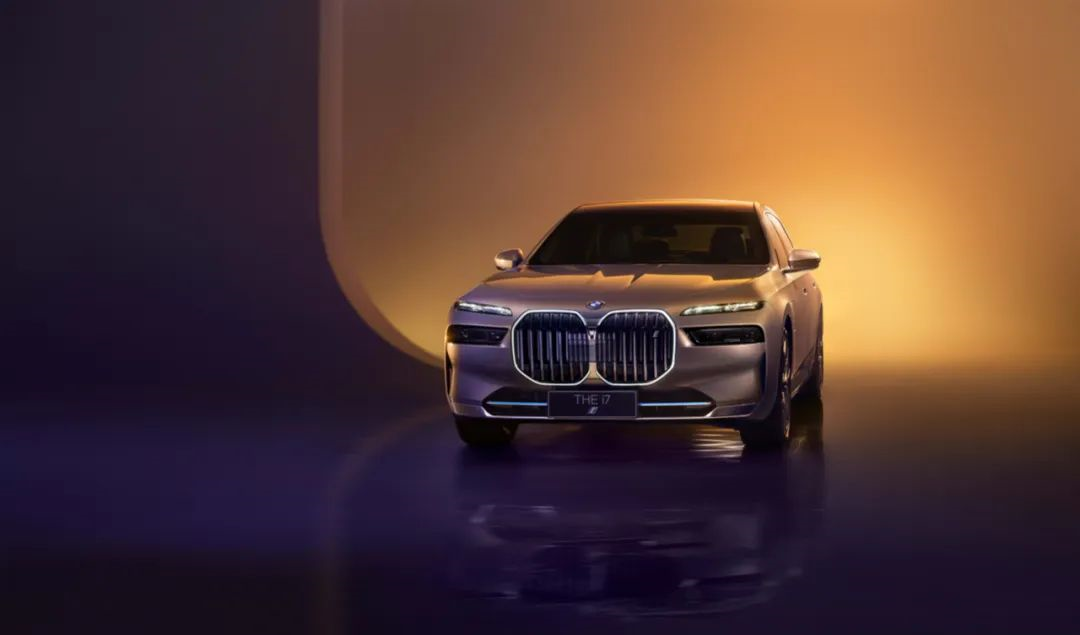Author: Sid
In 2022, we welcome the comprehensive electrification transition of luxury brands. Indeed, this time point is much earlier than we expected. At last night’s BMW press conference, apart from the all-new 7 series that ignited all social media, the most touching moment was the description of the group strategy by Mr. Zipse, the chairman of the BMW Group.
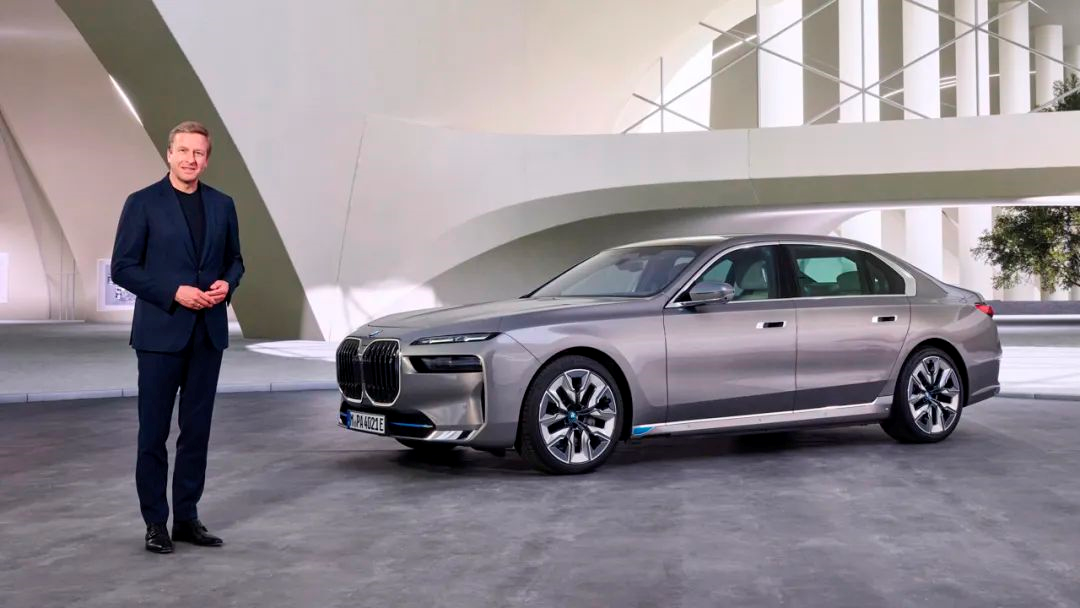
“The all-new BMW 7 series is our masterpiece, which integrates revolutionary design and innovative technology, showcasing its technological charm. The innovative BMW i7 is the strongest 7 series, which is the latest example of BMW’s successful development and firm electrification transition,” said Oliver Zipse, chairman of the BMW Group. “In 2025, we will also welcome the arrival of the ‘New Generation’ models. This project will be based on the concept of ‘Digital First, Electrification First, and Sustainability First.’ The ‘New Generation’ models will accelerate the electrification development of BMW Group.”
BMW has taken the lead in the layout of electrification products. So far, BMW has provided Chinese customers with five pure electric models. It is expected that by 2022, BMW Group will produce and test 15 pure electric models, covering approximately 90% of the luxury car segment.

Therefore, if we can see a series of BMW electrification products under new concepts in 2025, it will be an event that subverts my perception of traditional luxury brands. BMW’s actions are really fast. BMW, which could have relied on gasoline cars for a long time, is now trying to reform itself in the shortest time and bravely embrace the next era of the automotive industry.
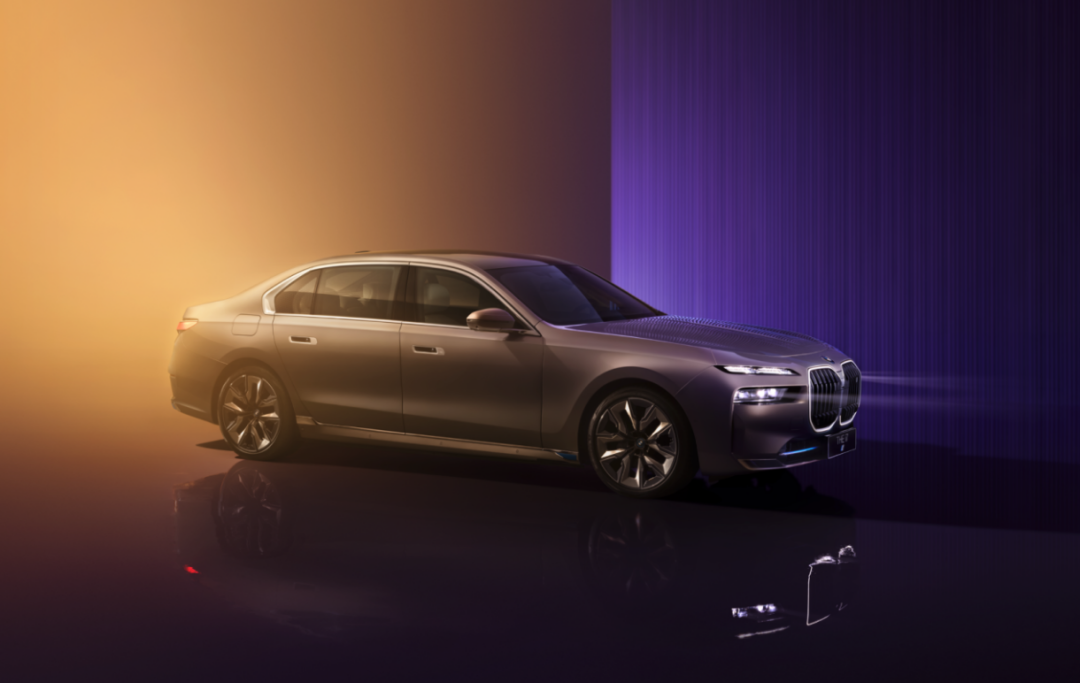
The global debut of the all-new BMW 7 series and the electrified i7 in China further confirms BMW’s determination to transform. China is the market where intelligent and electrification transition is the fastest. At this moment, people worldwide who are interested in the latest 7 series will look towards China because only the people there understand how much effort BMW has put into this.
The New Flagship “7”
Not all flagship sedans can be endowed with the special meaning of the number “7”. This lucky number seems to belong to and only to BMW from the beginning.
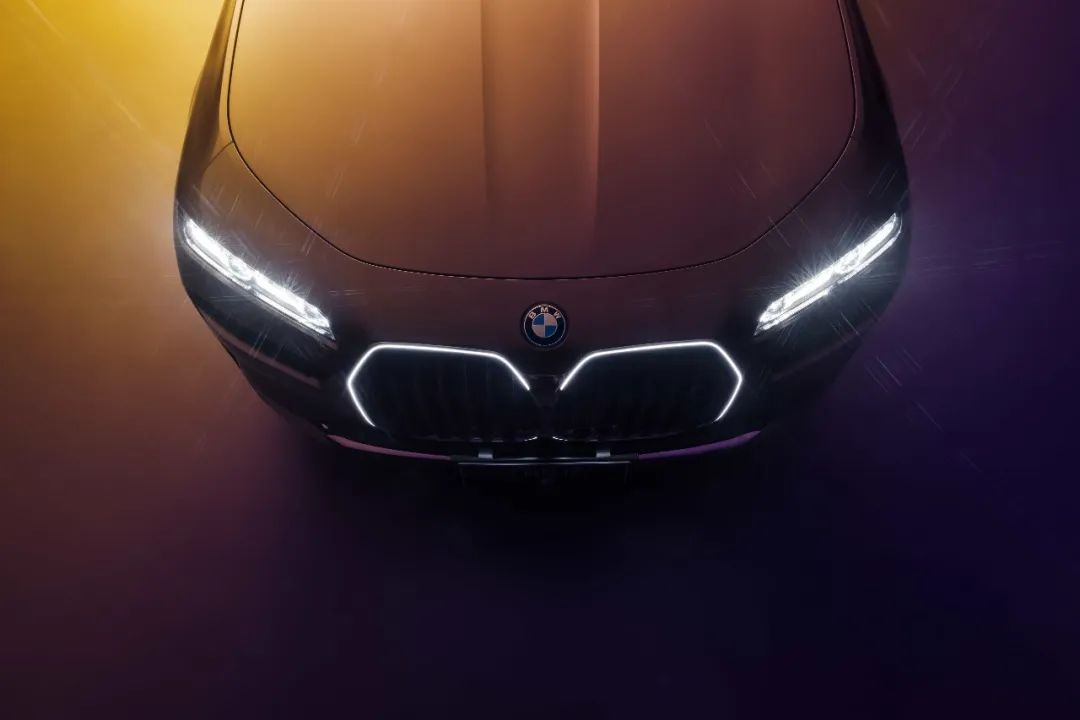 As BMW’s flagship sedan, each generation has left a deep impression in the hearts of car enthusiasts: from the first-generation BMW 7 Series E23 equipped with intelligent electronic engine and driving computer, to the E32 equipped with xenon headlights for the first time; from the E38 with curtain-style airbags, GPS navigation, and in-car TV for the first time, to Chris Bangle’s unconventional work E65/E66, and then to the fifth and sixth generation models featuring innovative functions such as gesture control and night vision, the innovation history of BMW 7 Series is nothing but the evolution history of a luxury sedan. After six generations of evolution, today the “flagship” of BMW also happens to embrace its lucky number – the all-new BMW 7 Series of the seventh generation.
As BMW’s flagship sedan, each generation has left a deep impression in the hearts of car enthusiasts: from the first-generation BMW 7 Series E23 equipped with intelligent electronic engine and driving computer, to the E32 equipped with xenon headlights for the first time; from the E38 with curtain-style airbags, GPS navigation, and in-car TV for the first time, to Chris Bangle’s unconventional work E65/E66, and then to the fifth and sixth generation models featuring innovative functions such as gesture control and night vision, the innovation history of BMW 7 Series is nothing but the evolution history of a luxury sedan. After six generations of evolution, today the “flagship” of BMW also happens to embrace its lucky number – the all-new BMW 7 Series of the seventh generation.
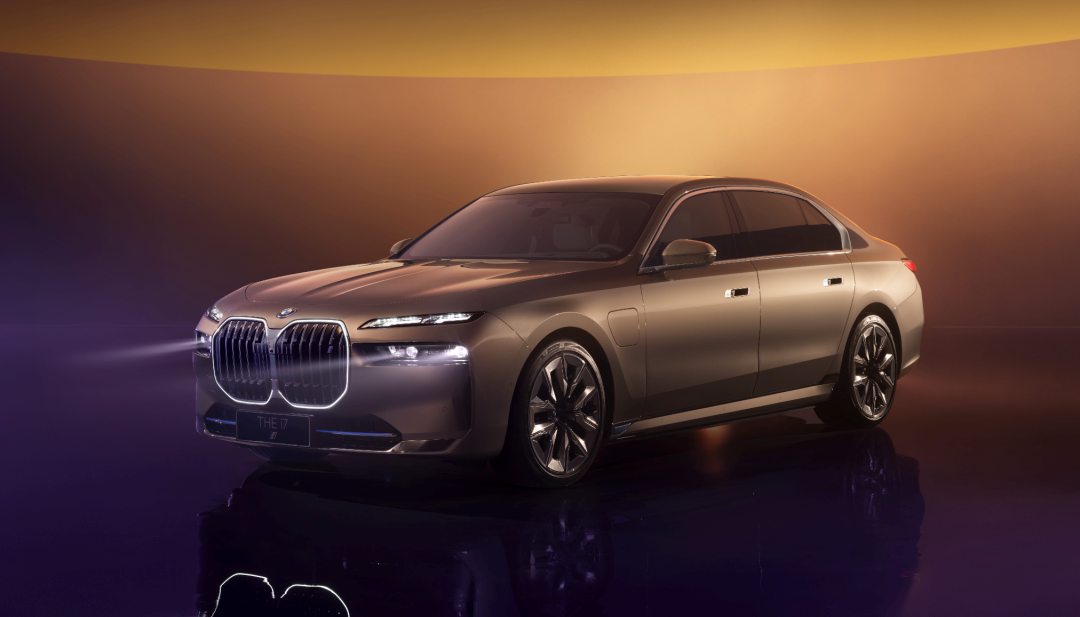
Design Originality Washed by the Wave of Technology
As the flagship model of a luxury brand, the design of the BMW 7 Series is undoubtedly the first to receive public attention, as it often represents the design direction of the entire brand’s product lineup in the future. For BMW in recent years, the change of the front-end styling has always been the “storm center” that car enthusiasts talked about after dinner.
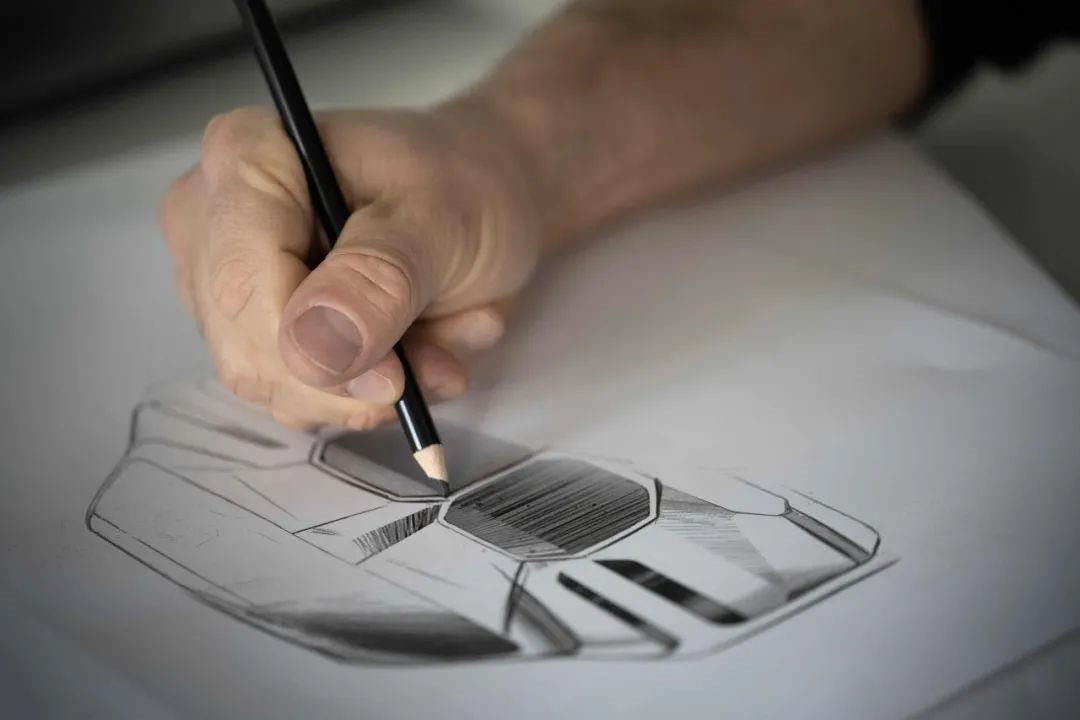
The all-new BMW 7 Series is no exception. As early as the exposure of spy photos, foreign media and car enthusiasts have been tirelessly releasing one fanciful “new 7 Series rendering” after another. When I saw the real car, there was only one thought in my mind: they guessed the beginning of the story right, but not the ending.
The use of split headlamp design on the luxury large sedan like the 7 Series is undoubtedly bold for BMW, coupled with the BMW “Hofmeister kink” design and the BMW “kidney grille” that is bigger than the previous generation, which elevates the visual effect of the entire front end. No matter from what angle you look at it, the front end of the all-new BMW 7 Series will give people a domineering and imposing temperament, which is extremely rare in the era of automobile design that is gradually dominated by technological minimalism.
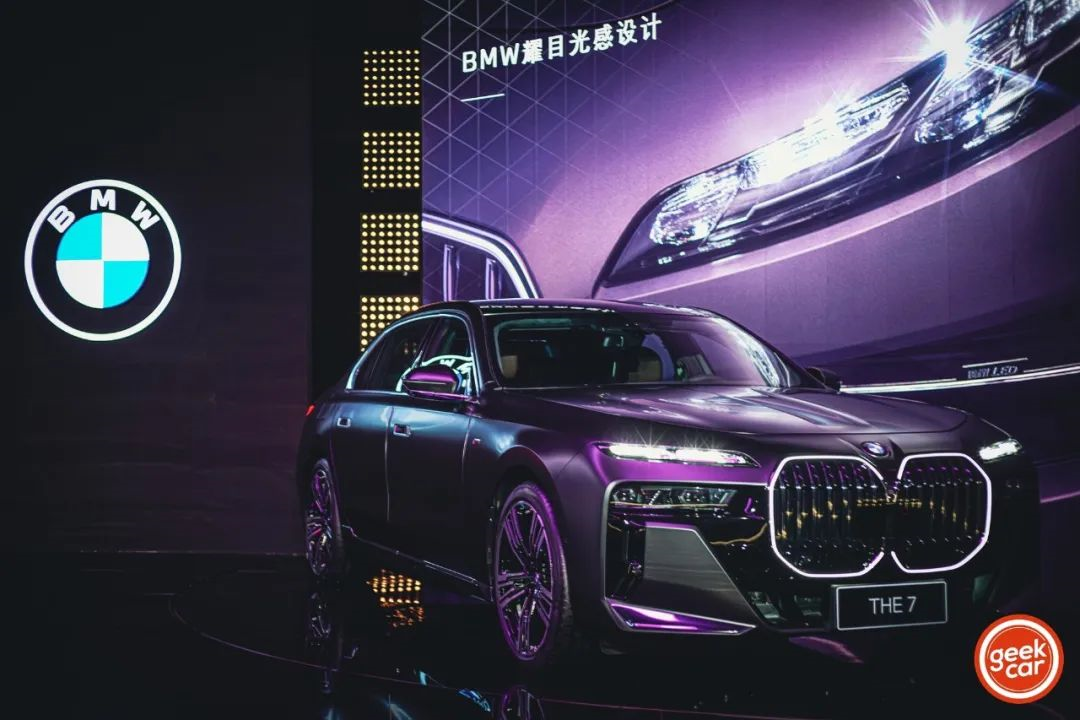
On the other hand, the eye-catching crystal-like daytime running lights and the illuminable BMW “kidney grille” will form a highly recognizable brand identity at night. This high-profile front-end design reminds me of the all-new Ghost from Rolls-Royce, a subsidiary of the BMW Group, except that the front end of the all-new BMW 7 Series is more technological and aggressive, while the Ghost is more elegant and noble.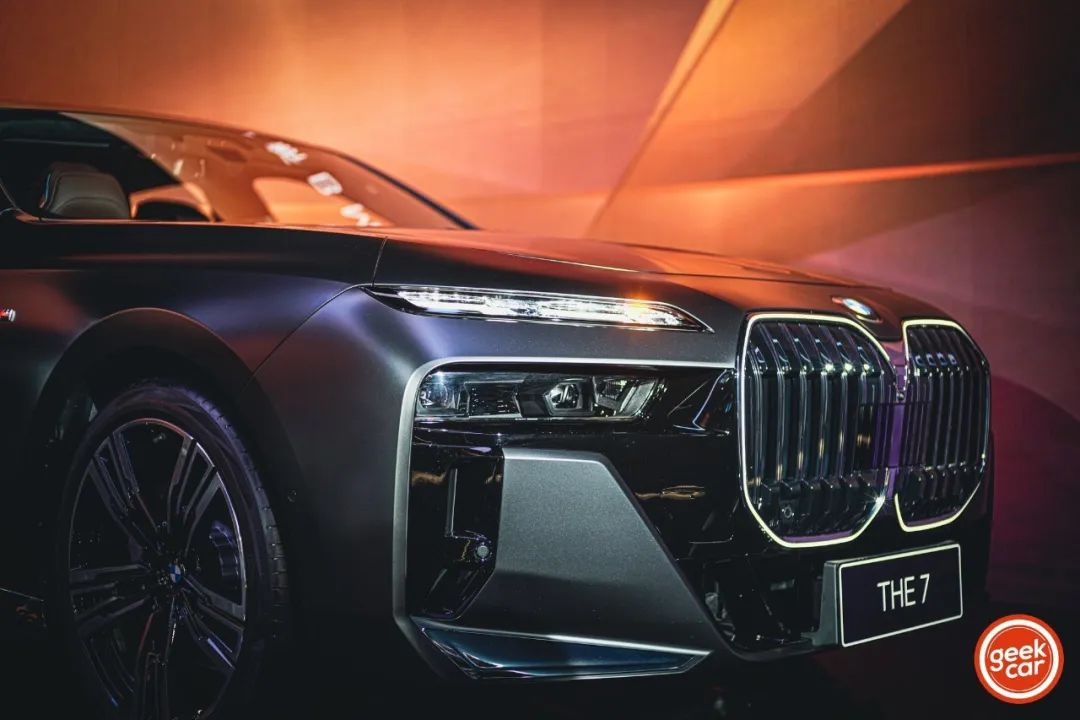
From the side, the skyrocketing front of the car seems to be showcasing its pride as the new flagship of BMW to the world. Whether it’s the brand new 7 Series or the i7, the streamlined body lines extend from the tall and plump front to the dynamic and eye-catching tail, outlining a body posture that combines movement and grand elegance, while still retaining the dynamic and elegant classic proportions of BMW flagship sedans, and even restoring the edgy line language of the E38 era. The classic Hofmeister kink chrome decoration has been moved to the C-pillar position, and the matrix-style geometric dark pattern has been added to the rear window, making the interior space more spacious and bright, while also ensuring the privacy needs of rear passengers.
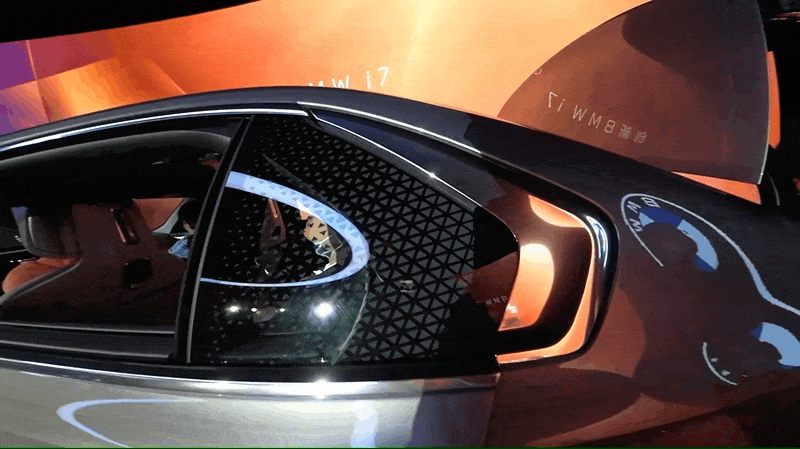
In recent years, car design, especially luxury car design, seems to always be teased and even criticized by everyone. However, in my opinion, this is the process of the automotive industry/design transitioning from “romanticism first” to “technology first”. When the development speed of technology and techniques reach a certain level, there will be fundamental changes in design methods and theories. While luxury brand cars have some brand culture accumulation, they also need to constantly break through and innovate, trying to find new directions in the technology wave. BMW is a good example. Of course, there will be some fans and car culture enthusiasts who sneer at innovation, but car companies have to face a broader and younger consumer group, so how to integrate innovative technology methods into tradition and do design innovation, is a perennial topic for traditional luxury brands. The design of the all-new BMW 7 Series cannot escape the “Zhen Xiang Law” (meaning “truly fragrant” in Chinese internet slang).
The Secrets of the All-New 7 Series
The biggest change on the side of the car body is the hidden door handle. Continuing the “Shy Tech” invisible technology on the BMW iX, the door handle of the all-new 7 Series is also “hidden”. While reducing wind resistance, this door handle also has a “hidden mystery”. By pressing the button on the door handle, the door can be automatically opened to the maximum angle. Meanwhile, multiple sensors are installed on the door handle and the side skirt of the car body to detect obstacles near the car when the door is opened. The driver can also open all the doors with one button on the left side, adding a lot of “ritual sense” to the whole car. Moreover, all passengers can open and close the doors with the automatic door opening/closing button on the door, giving a feel of “Rolls-Royce style”.
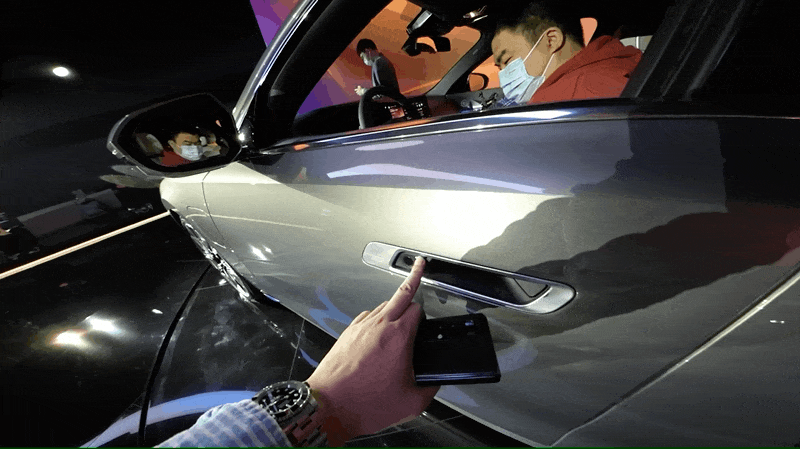 In addition to the one-button automatic opening and closing of the car door, the car is also equipped with another simple door opening button and an emergency mechanical switch. In addition, customers can also open the car door through BMW’s intelligent personal assistant, My BMW App, central touch screen, and key.
In addition to the one-button automatic opening and closing of the car door, the car is also equipped with another simple door opening button and an emergency mechanical switch. In addition, customers can also open the car door through BMW’s intelligent personal assistant, My BMW App, central touch screen, and key.
The largest 7 series in history
The all-new BMW 7 series is 5,391mm long, 1,950mm wide, and 1,548mm high. Compared with the previous generation of 7 series, it is more than 10 centimeters longer, 5 centimeters wider, and about 4 centimeters higher, making it a true “largest BMW flagship sedan in history”. This oversized volume reinforces the leader’s atmosphere of grandeur and elegant solemnity. At the same time, the extra-long wheelbase of 3,215mm also lays the foundation for spacious and comfortable space.
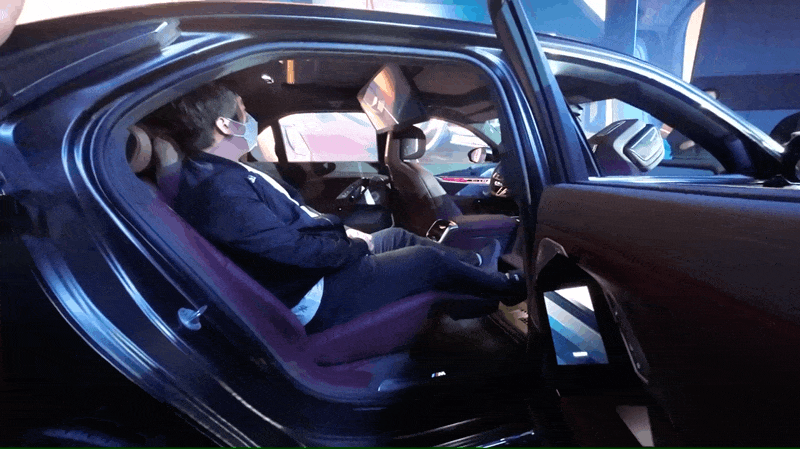
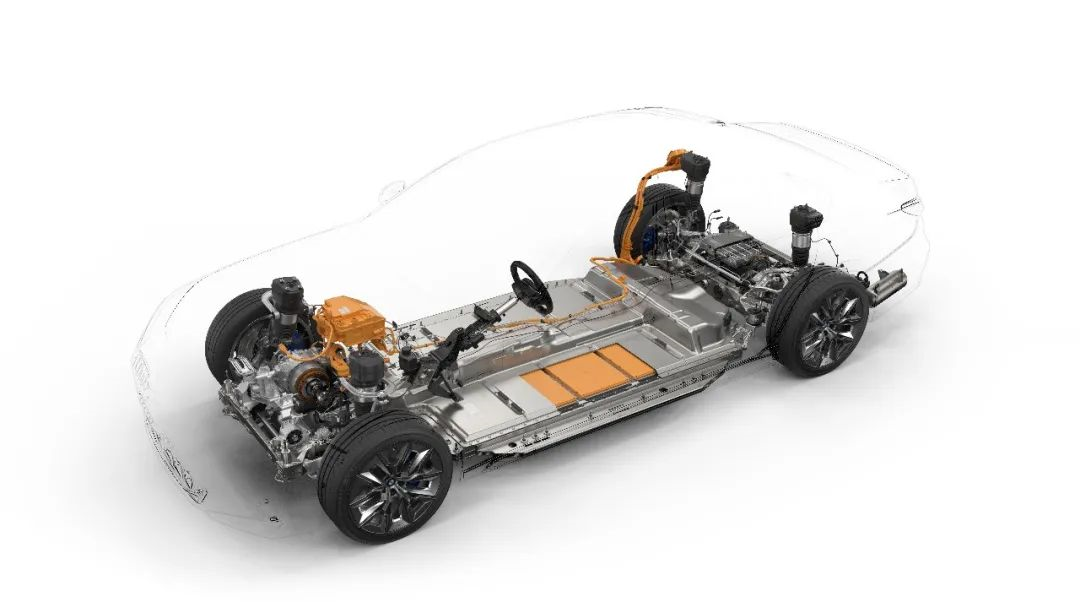
Even the pure electric car model i7 with battery packs all over the chassis does not feel any design inconsistency or invasion of interior space due to the battery layout when viewed from the side. Personally, I think this should be attributed to BMW’s strong architecture integration ability and engineering capabilities in electrification.
From “car TV” 30 years ago to “the third space” 30 years later
In the current era of rapid development of intelligent automotive technology, almost all new and strong car companies will mention the concept of “the third space” when releasing new models. Inexplicably, with the development of automotive intelligence and automation, the interior space of cars can be empowered through smart cockpit technology, and more application scenarios and space other than driving functions can be derived, such as rest spaces, game rooms, audio-visual rooms, offices, etc.
As a German traditional giant automaker, BMW actually started their technical attempts at “the third space” nearly 30 years ago. They pioneered the car TV on the third-generation BMW 7 series E38 model globally, but it was still a single-function era at that time, without the current “domain fusion” technology. Who would have thought that after 30 years, when intelligentization swept the automotive industry, BMW once again stood on the crest of the wave and redefined the concept of the car’s “the third space.”
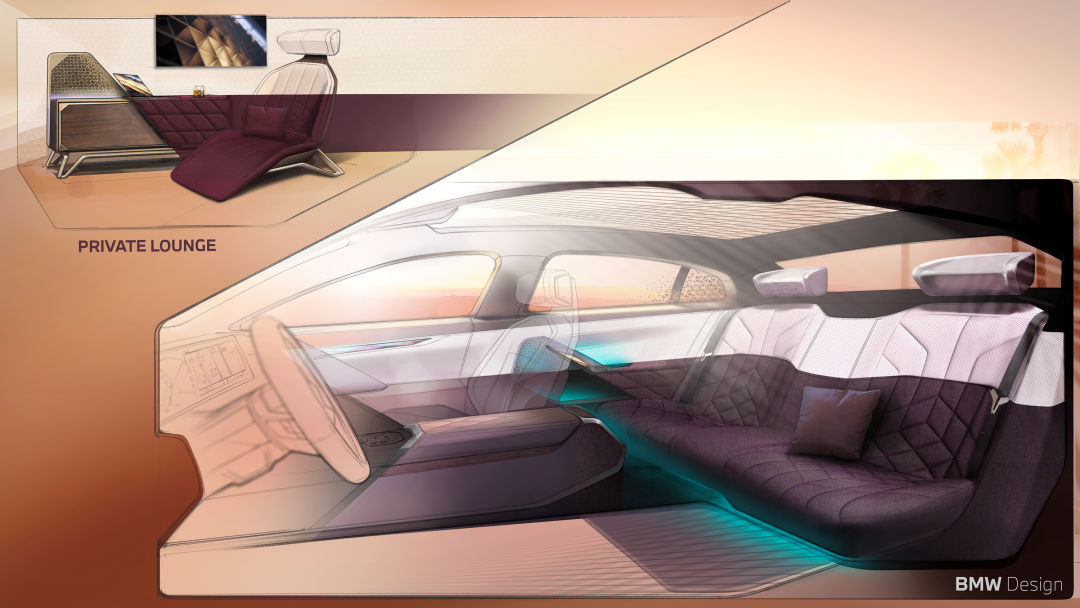
If I have to choose the most memorable innovative product on this all-new BMW 7 series, I will definitely choose the “BMW floating screen” placed in the front roof of the back seat without hesitation.“`
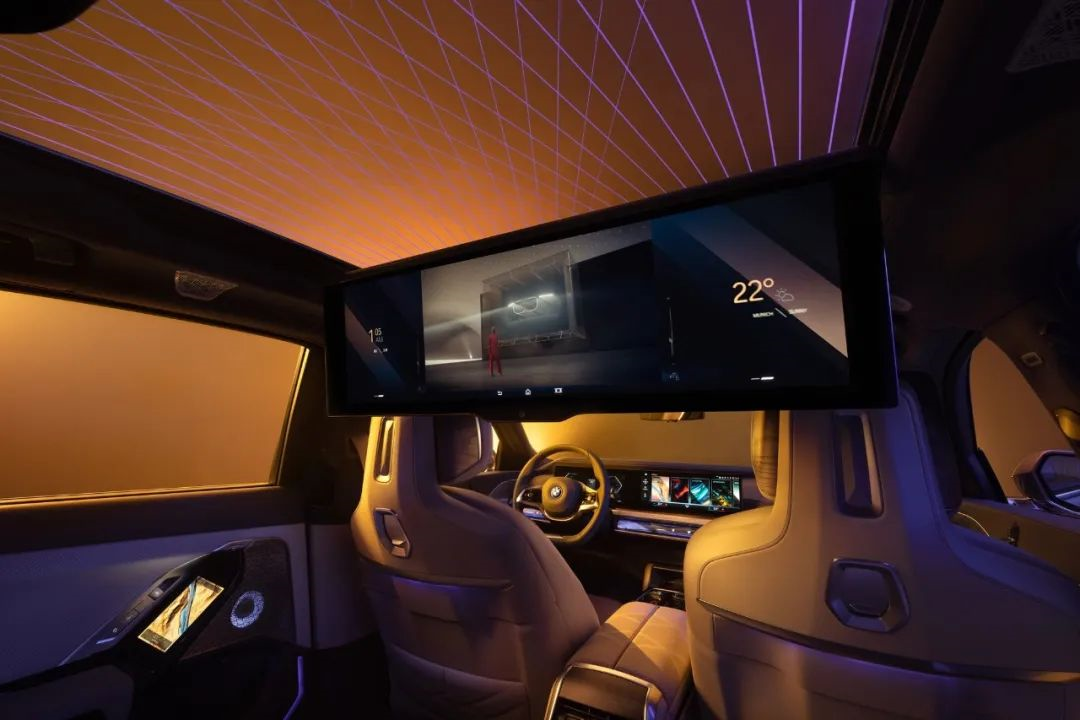
On the hardware level, BMW has equipped the rear seats of the new 7 Series with a 31-inch ultra-wide 8K resolution display (supporting 32:9 panoramic playback mode) and a Bowers & Wilkins 4D diamond-surround sound system with 36 speakers. On the software level, it integrates iQiyi and Huawei App Store. Rear passengers can switch to “Cinema mode” with one touch on the 5.5-inch armrest touch screen on the door panel. Under this mode, the interior ambient lighting and sunshade will be automatically adjusted, creating a “private cinema” viewing atmosphere, which I believe will be a totally new experience for rear passengers.

In fact, to achieve innovation in the “Third Space”, it is impossible to do so without the fusion of hardware and software and technological breakthroughs. BMW has given us a good demonstration: on the hardware level, this rear foldable HD entertainment screen is an industry first and requires a lot of stability and safety collision testing in the product development process, as well as interaction-related metrics, which is a significant cost investment for BMW.

On the software and interaction levels, a large amount of scenario definition, adaptation and testing work also needs to be done. For the brief test drive experience, the viewing distance, angle, clarity, and design aesthetics of this screen have exceeded my psychological expectations. Coupled with the Bowers & Wilkins 4D diamond-surround sound system, I believe it will be another industry-ceiling-level scenario experience.
Interaction is in charge of “new”, and crystals are in charge of “luxury”
Digitization is a double-edged sword for traditional luxury car brands. “Digitization for the sake of digitization” can lead luxury brands to a bumpy road, while “using good digital technology to create new luxury experiences” can rejuvenate luxury brands. Obviously, on the all-new BMW 7 Series, BMW showed me the latter.
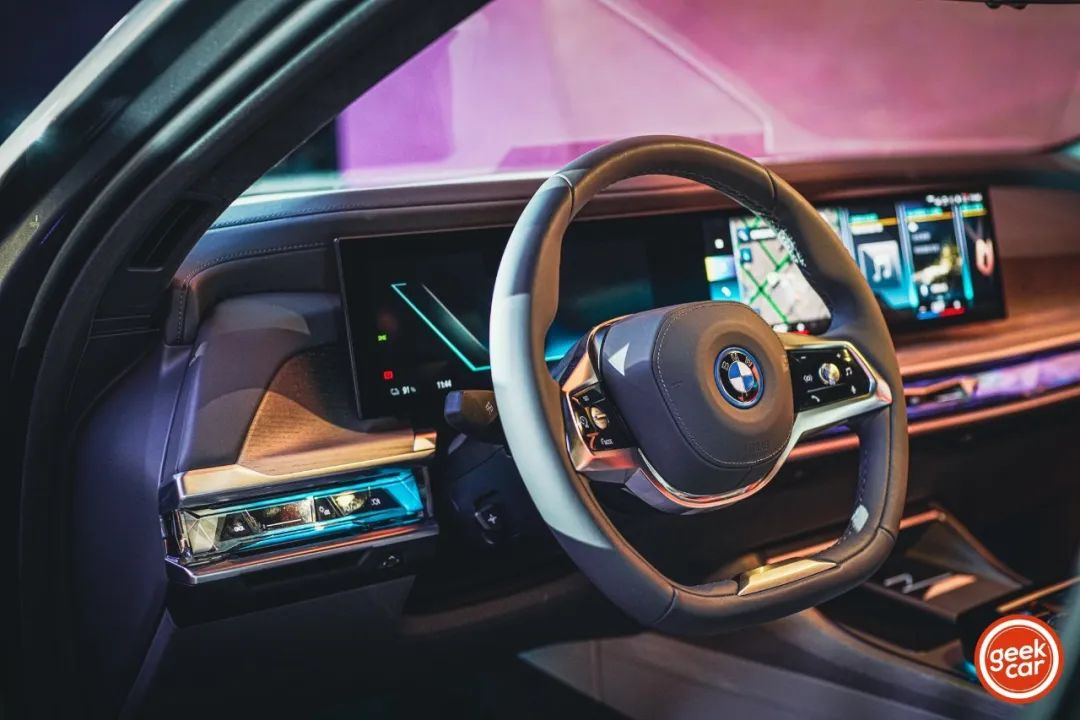
“`The sight inside the car is the brand new BMW integral suspension curved surface screen, which shares the same design style as the previous BMW iX. The 12.3-inch digital instrument panel and the 14.9-inch touchscreen central display merge into one, with a graphic resolution of 200 ppi (pixels per inch). The display tilts about 6 degrees towards the driver’s direction, showcasing BMW’s classic “driver-oriented” design concept. During our on-site experience, the new onboard system equipped with the latest BMW iDrive and BMW Operating System 8.0 once again raises the bar for traditional luxury brand interactive experience.
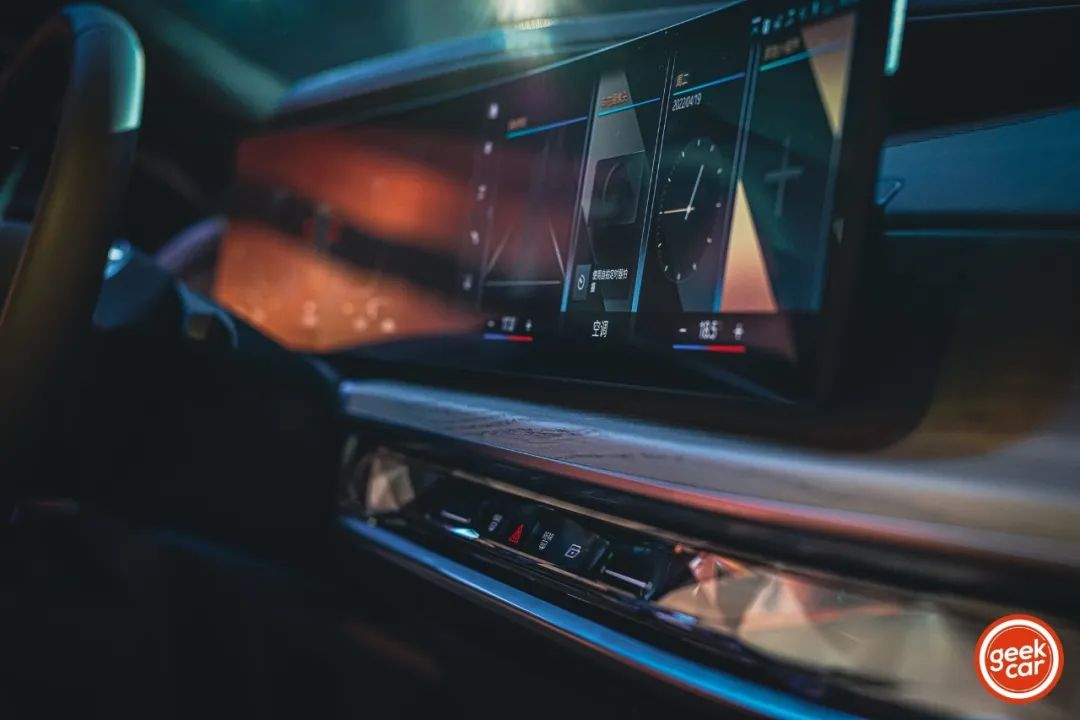
The new generation of onboard system has made groundbreaking innovations in hardware. The CPU performance has been improved by 100%, making overall computing speed more fluid. The GPU performance has been increased by 500%, providing better graphics quality and higher rendering efficiency. That is why we experienced a big difference in the onboard system compared to previous BMW’s onboard systems. The operation is smoother, and the visual effects are clearer and more delicate.
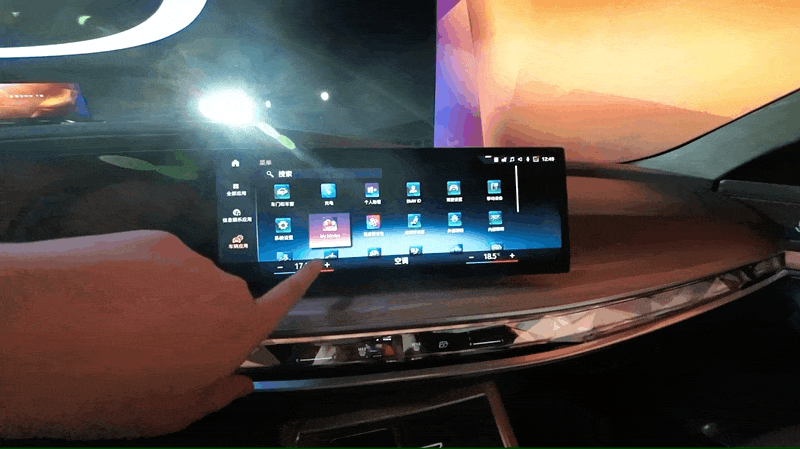
In terms of UI/VI design, compared with some new car brands, BMW still has a unified aesthetic and design language that is both classic and avant-garde. On the touch screen, it continues the interaction layout and logic of the new i3, i4, and iX, while almost completely eliminating mechanical buttons. It retains the crystal mechanical interaction knob of iDrive, which not only enhances the luxury atmosphere of the car interior, but also provides older BMW owners with a lower learning cost interactive solution, and increases the accuracy and safety of driving.

The all-new BMW 7 Series is also equipped with AR scene navigation, which is applied for the first time on both the dashboard and the integral suspension curved surface screen. Utilizing lane-level guidance information, image intelligent detection and recognition capabilities, and AR fusion algorithm capabilities, the “big arrow” floating on the road combines virtual and reality to create a navigation screen that is closer to the driver’s real vision.Apart from the large screen, a major highlight of the new BMW 7 Series interior design is the “BMW Interactive Light Carpet”. As owners of the old 7 Series, our biggest pain point is that BMW’s interior design has always been too conservative, which makes us silently comfort ourselves when we see the interior atmosphere lights of the new Mercedes S-Class lit up like a “nightclub”, thinking it’s just some superficial decoration. However, for the younger and more elite consumer groups, they are looking forward to seeing the luxury and freshness that distinguishes luxury brands from new forces. So BMW has achieved this.
On the application of ambient lighting interaction, BMW is particularly ingenious and thoughtful. For example, the BMW Interactive Light Carpet not only can change different colors under the theme mode (My Modes) to create different interior atmosphere in the personalized (Personal), sporty (Sport), and efficient (Efficient) three driving modes but also can be combined with the newly added “Relax” mode, “Expressive” mode, “Digital Art” mode, and “Theatre” mode, to achieve different scenarios of the “third space” combined with different “audio-visual-electronic” functional modules in the car such as seats and audio.
For example, in the “Relax” mode, the main color tone of the user interface visual design is a soft and gentle “light blue”, emphasizing the comfortable and pleasant state. In the “Theatre” mode, the interior lighting and sunshades will be automatically adjusted, supplemented with the Bowers & Wilkins 4D Diamond Surround Sound System with a power output of up to 1965 kilowatts, creating a dedicated mobile private theater for the rear passengers. The “Digital Art” mode is co-created by the BMW Group and internationally renowned multimedia artist Ms. Cao Fei, providing users with an immersive visual art experience full of beauty.Apart from that, the BMW Interactive Light Band also has more practical functions, such as when the hazard warning lights are turned on, the ambient lights will also flash to provide a reminder. When the rear passengers open the door, the Interactive Light Band can combine with the sensing result of the external sensor to provide occupant with side door collision warning and so on.
In addition, in terms of interior design, the BMW Interactive Light Band also carries the function of “air conditioning”. BMW’s interior design cleverly placed the air outlet on the gap above and below the interactive light band, integrating them into one. This also follows BMW’s “Shy Tech” principle of invisible technology.
From ambient lighting to “Interactive Light Band,” BMW has brought us a lot of imagination and showcased how to combine dynamic aesthetics with functionality using digital technology to create a luxurious interior atmosphere. Of course, the implementation of these functions also relies on innovative underlying technology. The all-new BMW 7 Series applies BMW’s latest generation of electronic and electrical architecture, 5G connectivity technology, gigabit Ethernet, etc. to set new benchmarks in connectivity functionality, computing power, and intelligence, thus guaranteeing a smooth, safe, and luxurious digital in-car experience in terms of hardware.
“The confidence to flip the table” comes from digitalization. “The all-new BMW 7 Series focuses on meeting the needs of Chinese customers. It integrates subversive design and innovative technology, showcasing the charms of technology.” This is a sentence from Mr. Zipse, the Chairman of the BMW Group, at yesterday’s launch of the all-new BMW 7 Series.
For a German century-old carmaker like BMW, its bold application and innovation of digitalization on their new flagship sedan are enough to show their confidence in their own brand, deep technical reserves, and respect for the Chinese market. As we all know, the Chinese market ranks among the top in terms of its tolerance and enthusiasm for intelligent and digitalization features. BMW bets on the future with digitalization, which is a heavy blow to those who consider BBA to be losing ground in the smart electric car race. And the confidence of BMW to “flip the table” comes from the trend of intelligentialization and digitization as well as BMW’s strong engineering capability.# The milestone models of BMW: The all-new BMW 7 Series and i7
As Mr. Zipse mentioned, 2025 is approaching. The determination of BMW to fully embrace intelligence and electrification has been perfectly reflected in the all-new 7 Series and i7. Looking back to these two vehicles when the “New Generation” of BMW is unveiled in 2025, they will surely be regarded as milestone models that rewrote the history of luxury brand sedans. More than just carrying on traditions and legacies, they represent a revolutionary breakthrough and innovation.
This article is a translation by ChatGPT of a Chinese report from 42HOW. If you have any questions about it, please email bd@42how.com.
